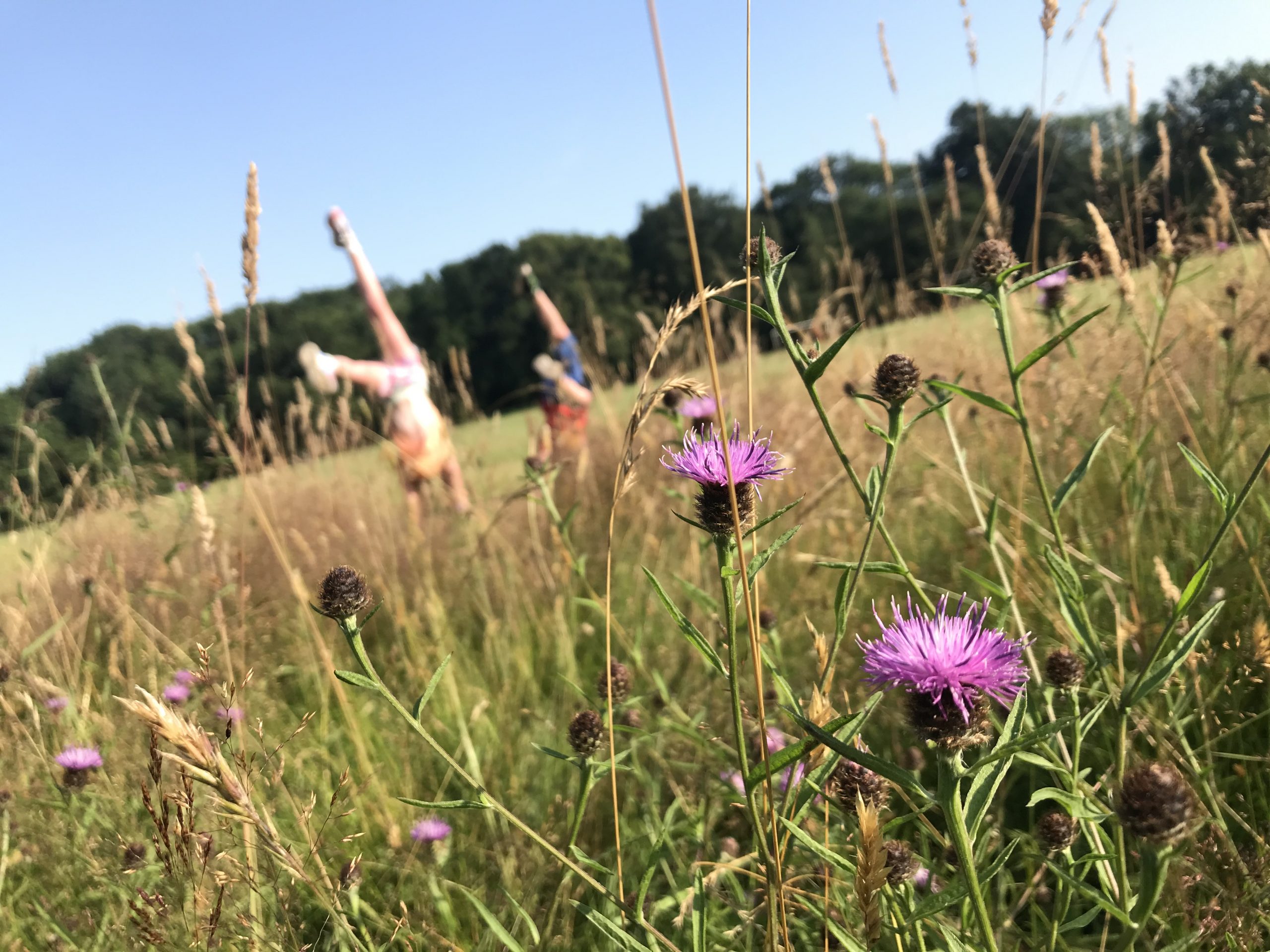
Swaying cuckooflower, orange-tip butterflies, pollinator-friendly knapweed and buff-tailed bumblebees are just some of the meadow species you can hope to spot on a new walking route in Cardiff this Wednesday, 11 May. The new Meadows Health and Wellbeing Route is being launched at University Hospital of Wales during Mental Health Awareness Week with an inaugural, guided walk for hospital staff, patients and the community and the unveiling of new meadow artwork at the hospital created by local children. The route is part of Magnificent Meadows Cymru[1], Wales’s largest ever wildflower restoration initiative.
The walk traverses the species-rich meadows of Heath Park – Cardiff’s ‘green lung’[2], a diverse urban haven owned and managed by Cardiff Council. The Meadows Health and Wellbeing Route will be an opportunity for hospital staff, patients, and the local community to find refuge from daily pressures as they enjoy the peaceful wildflower meadows. An accompanying virtual meadow experience and ‘year-round’ walk[3] has also been created by the project team for those who are unable to visit the meadow in person.
Cassie Crocker, Plantlife’s Meadow Project Officer said “Species-rich grasslands are incredible places to be and unparalleled in their potential to support over 700 wildflowers and 1,000 species of insects. Orange-tip butterflies thrive here in the meadow specifically because cuckooflower (Cardamine pratensis), is given the right habitat to prosper, and subsequently provides food and a place for these attractive butterflies to lay their eggs. When we start to look outside ourselves and sharpen our focus on the microscopic world of meadows, it can be truly calming, if not uplifting.”
Wales is home to 40% of the UK’s semi-natural grassland, yet remaining fragments are under threat of being destroyed, with 91% of its species-rich meadow lost in living memory.
Parks Operational Manager for Cardiff Council, Jon Maidment, said: “The meadows at Heath Park are home to an abundance of wildlife and provide the perfect place for a moment of respite – we hope this new trail will help to raise awareness of the meadows so more people can enjoy spending time there, surrounded by nature.”
Saving meadows goes beyond environmental conservation; they have important benefits for people, too. Research shows[4] that looking at flowers can lower blood pressure, reduce the production of stress hormones and calm areas of the brain areas related to emotions. Put simply, looking at flowers is good for you.
Andriele Madison, from project partner the Centre for Sustainable Healthcare, said, “This project is a great opportunity to include walking in nature as part of the care of patients, bringing them an array of physical and mental health benefits. These include reduced chances of cardiovascular diseases, diabetes, stress, anxiety and depression. We hope NHS staff will also take advantage of the Meadows Health and Wellbeing Route for their own wellbeing. This is a much-needed break for our health staff after an exhausting couple of years.”
Simone Joslyn, Head of Cardiff & Vale Health Charity said, “We’re thrilled to have supported this excellent project and included artwork in partnership with Beth Morris Workshops[5]. A gigantic, new ‘picnic blanket’ artwork featuring meadow flowers will be displayed on the main outpatient corridor at University Hospital of Wales; Picnic blankets depicting the same artwork will also be available for people to collect and use in the meadow”.
Additional information:
The best time to enjoy meadows is between May and October. Here are some species to look out for in Heath Park and in your own local grassland or meadow:
- Lady’s smock – Also known as cuckooflower (and myriad other names) as its flowers open around the time the cuckoo starts to call. This is an important food source for the orange-tip butterfly
- Orange-tip butterfly – It’s the males who have the unmistakable, orange wing tips. They prefer damp habitats such as meadows, but also visit gardens and hedgerows
- Knapweed – a firm favourite of our pollinating insects, being a source of good quality nectar. As well as supporting our bees, butterflies and beetles, its seeds provide food for many birds.
- Birds-foot-trefoil – is the larval food plant for the common blue, green hairstreak and dingy skipper butterflies. At the end of the summer this plant produces claw-like seed pods reminiscent of a bird’s foot
- Yarrow – little flowers, usually white but sometimes have light hues of pink, and cluster together in tight groups forming an umbrella. The feather-like leaves are aromatic when crushed. Yarrow was given its botanical name after the Greek hero Achilles, who is said to have used it to treat wounds on the battlefield.
For more information on meadows in Wales visit: https://meadows.plantlife.org.uk/cy/home-2/
[1] https://www.plantlife.org.uk/wales/our-work/projects-wales-cymru/magnificent-meadows-cymru-wales
[2] https://www.outdoorcardiff.com/parks/heath-park/
[3] https://storymaps.arcgis.com/stories/dcb3418982ef446e91ac647f0f4fad1a
[4] https://www.sciencedirect.com/science/article/pii/S0272494419304001#bbib25
[5] https://www.bethmorrisworkshops.co.uk/


